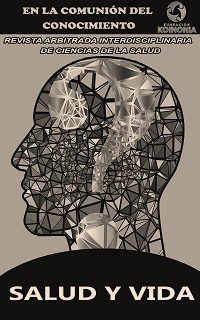Complications of thermal burns on the patient
DOI:
https://doi.org/10.35381/s.v.v7i1.3595Keywords:
Burn units, inpatient care units, burns, (Source: DeCS)Abstract
Objective: To analyze the complications of thermal burns in the patient. Method: Descriptive documentary. Results and Conclusion: Thermal burns produced by direct contact with fire, liquids or hot gases are among the most serious injuries and those with the highest mortality rates compared to other injuries. The diagnosis and early treatment given to a critical burn patient will be of great importance in the evolution of the patient, and the early or late recovery will also depend on the speed with which the patient is treated in a hospital center in a unit specialized in the management of these patients.
Downloads
References
Miquet L, Rodríguez R, Chávez M, Orozco M, Delgado L. Niveles de ascorbato en pacientes quemados durante la fase aguda [Ascorbate levels in burn patients during the acute phase]. Cir. Plást. Iberolatinoam. 2021;47(2):227-234.
Pérez M. Capítulo de Quemaduras de FILACP Actualización en el tratamiento del paciente quemado [FILACP Burn Chapter Update on the Treatment of the Burn Patient]. Cir. Plást. Iberolatinoam. 2020;46(1):S3-S4.
Vacaflor C. Referencias históricas en la evolución del tratamiento de las quemaduras [Historical references in the evolution of burn treatment]. Cir. Plást. Iberolatinoam. 2020;46(1):S7-S8.
Amigó M, Raventós M, Nogué S. Análisis comparativo de los diversos tipos de quemaduras atendidas en urgencias [Comparative analysis of the different types of burns treated in the emergency department]. RqR Enfermería Comunitaria. 2018;6(3):8-17.
Rohan CJ, Lohade RP, Brewer C, Travers JB. Platelet-activating factor and microvesicle particles as potential mediators for the toxicity associated with intoxicated thermal burn injury. Biofactors. 2022;48(6):1250-1256. https://doi.org/10.1002/biof.1917
Bouleau J, Jacquemart J, Labalette P. Slit-Lamp Image of Epithelial Thermal Burn. Ophthalmology. 2022;129(8):922. https://doi.org/10.1016/j.ophtha.2022.02.009
Ladhani HA, Yowler CJ, Claridge JA. Burn Wound Colonization, Infection, and Sepsis. Surg Infect (Larchmt). 2021;22(1):44-48. https://doi.org/10.1089/sur.2020.346
Partain KP, Fabia R, Thakkar RK. Pediatric burn care: new techniques and outcomes. Curr Opin Pediatr. 2020;32(3):405-410. https://doi.org/10.1097/MOP.0000000000000902
Manrique I, Angelats C. Abordaje de las quemaduras en Atención Primaria []. Pediatr Integral. 2019; 23(2): 81 – 89.
Hoogewerf CJ, Hop MJ, Nieuwenhuis MK, Oen IM, Middelkoop E, Van Baar ME. Topical treatment for facial burns. Cochrane Database Syst Rev. 2020;7(7):CD008058. https://doi.org/10.1002/14651858.CD008058.pub3
Duffy L, Clarke CS, Lewis G, et al. Antidepressant medication to prevent depression relapse in primary care: the ANTLER RCT. Health Technol Assess. 2021;25(69):1-62. https://doi.org/10.3310/hta25690
Tran S, Jacques MA, Holland AJ. Assessment and management of minor burns in children. Aust J Gen Pract. 2019;48(9):590-594. https://doi.org/10.31128/AJGP-04-19-4919
Sarchi Y, Ruiz O, Durán P, Herrera J. Limpiezas quirúrgicas en pacientes quemados [Surgical cleanings in burn patients]. Revista Científica Mundo de la Investigación y el Conocimiento. 2019;3(3):1303-1326.
Satrústegui L, Vintanel S, Niño A, Espinosa P, Palacín V, Palacín L. Quemaduras causas, consecuencias y su tratamiento [Burns causes, consequences and treatment]. Revista Sanitaria de Investigación. 2021;2(11):1-3.
Palomar S, Cisneros B, Martínez J, Bescós J, Bueno C, Calvo I. Proceso de atención de enfermería a paciente con quemadura térmica de segundo grado profundo en una unidad de grandes quemados [Nursing care process for a patient with a deep second-degree thermal burn in a major burns unit]. Revista Sanitaria de Investigación. 2022;3(2): 1-5.
Published
How to Cite
Issue
Section
License
Copyright (c) 2023 Jenny Esmeralda Fonseca-Martínez, Adisnay Rodríguez-Plascencia, Ariel Romero-Fernández, Danilo Eduardo Molina-Molina

This work is licensed under a Creative Commons Attribution-NonCommercial-ShareAlike 4.0 International License.
CC BY-NC-SA : Esta licencia permite a los reutilizadores distribuir, remezclar, adaptar y construir sobre el material en cualquier medio o formato solo con fines no comerciales, y solo siempre y cuando se dé la atribución al creador. Si remezcla, adapta o construye sobre el material, debe licenciar el material modificado bajo términos idénticos.
OAI-PMH: https://fundacionkoinonia.com.ve/ojs/index.php/saludyvida/oai.









